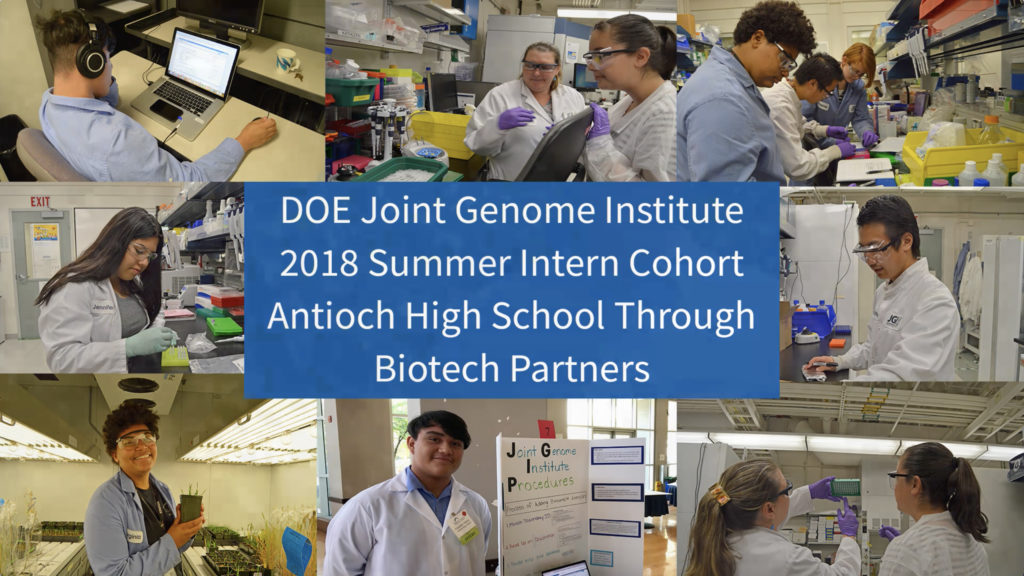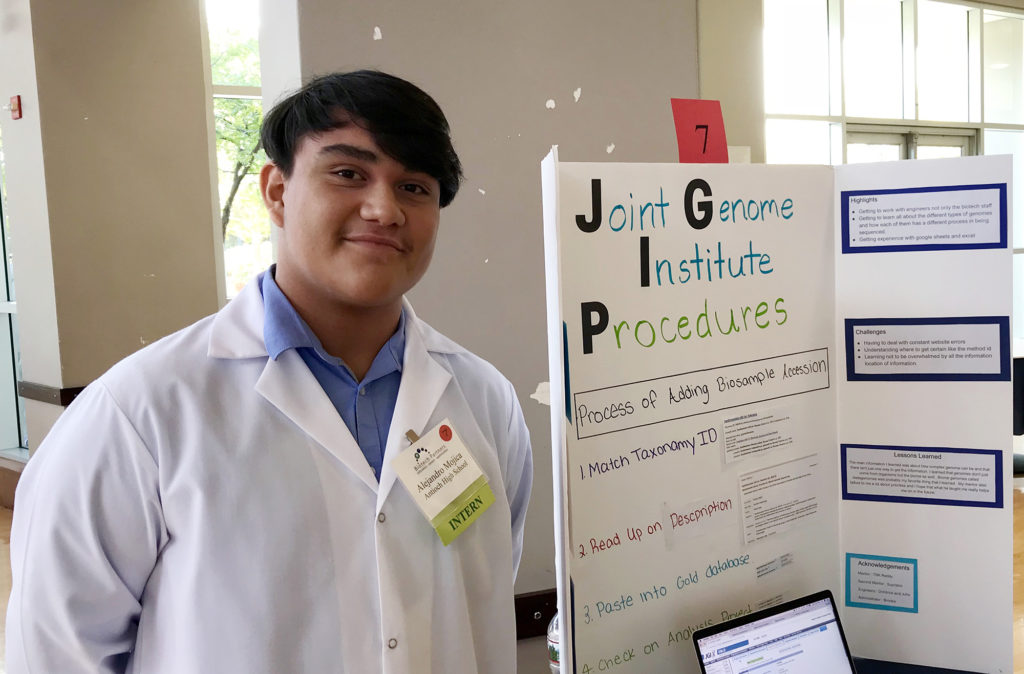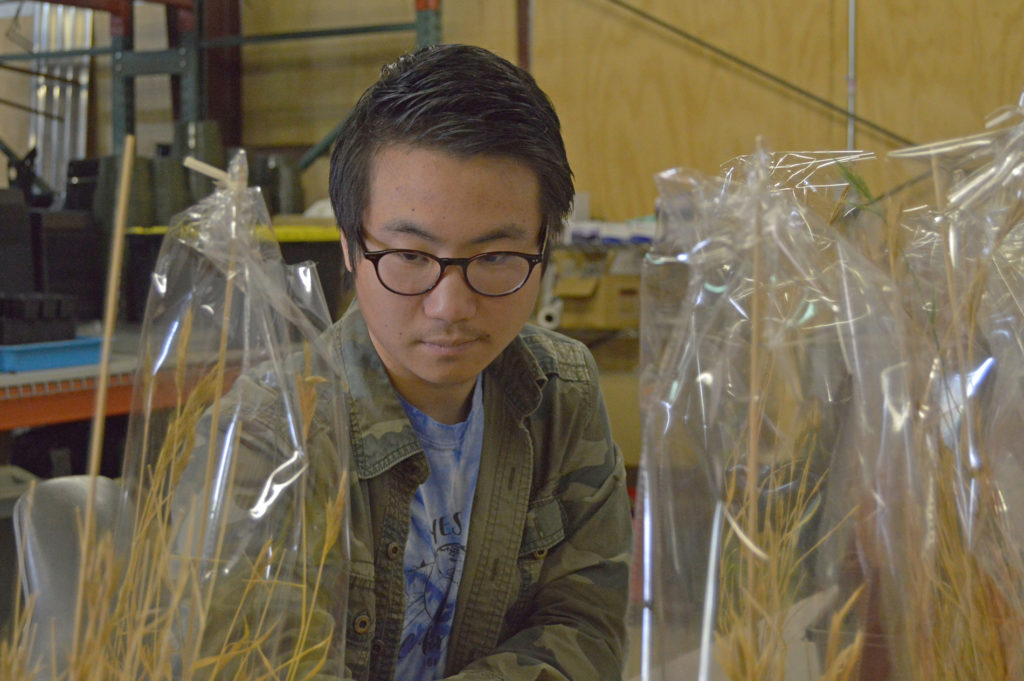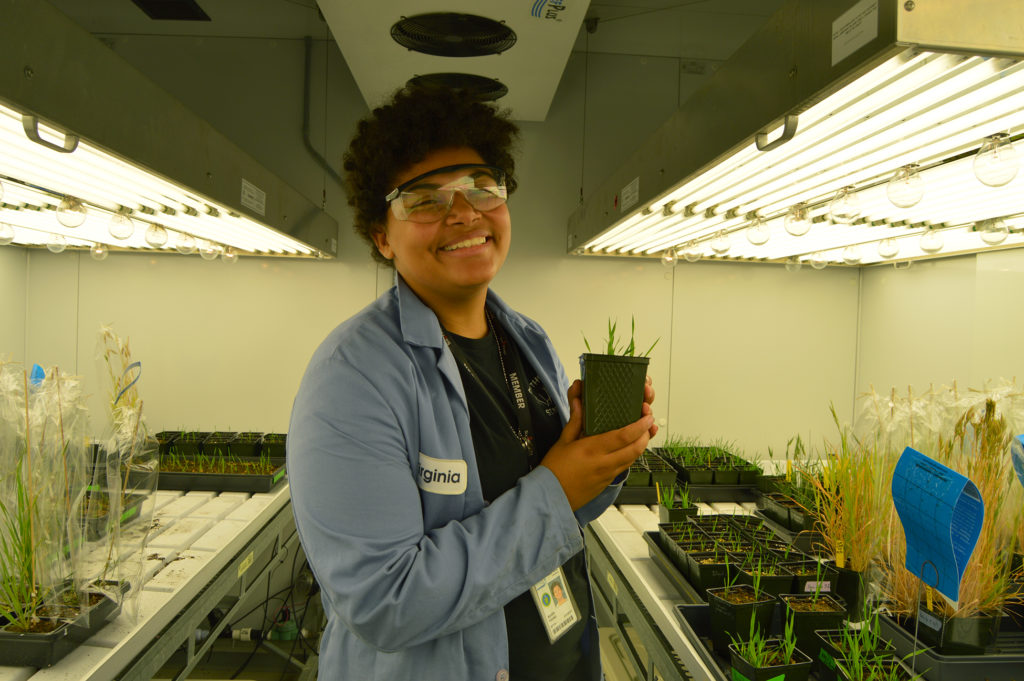Notes from the Summer 2018 Biotech Partners Interns from Antioch High School.
Though a partnership with Biotech Partners, a nonprofit that provides underserved youth in the Bay Area with personal, academic and professional development experiences that increase participation in higher education and access to fulfilling science careers, JGI hosted five students from Antioch High School this summer.

Click on the image above or click here to watch the video and learn more about each of the Biotech Partners interns.
 Jazmin Heredia, Antioch High School, class of 2019
Jazmin Heredia, Antioch High School, class of 2019
JGI Mentor: Amy Cartwright, Plant Functional Genomics
“This internship has showed me that a stem career isn’t just doing one thing most of the time. You get to work on many different projects and learn about your peers projects, so you learn a lot. It has influenced me to pursue a career making medications because I loved doing the lab work. One of my favorite things has been that I am able to work on different things and not just focus on the seed work, because it has opened me up to learning about many different things, and different protocols.”
Lexi Hudson, Antioch High School, class of 2019
JGI Mentors: Hyunsoo Na & Kathleen Lail, Sample Preparation Technology
“I planned to go into forensics before I started this internship and now that I’m in my mid-internship stages where I’m doing more things in the lab, I find myself being even more driven than I was before to enter a field related to biotech. Although I’ve only been here for 3 weeks I’ve found that I not only love working in the labs here but that I thoroughly enjoy the people and community that JGI has. When I originally came here I wasn’t expecting such a close knit community that always has little events planned so that all the staff here can interact with each other.”
 Alejandro Mojica, Antioch High School, class of 2019
Alejandro Mojica, Antioch High School, class of 2019
JGI Mentors: TBK Reddy & Supratim Mukherjee, Genomic Standards Group
“This internship has been very eye opening . It showed me how a stem career isn’t all lab work and protocol but is also the engineering side . This was a great internship cause not only did I get to see how biotech and engineering work together. My favorite thing so far in the internship would have to be the meetings. Being able to hear how the group that runs gold talks and plans just seemed very interesting to me.”
 Michael Pimwong, Antioch High School, class of 2019
Michael Pimwong, Antioch High School, class of 2019
JGI Mentor: Virginia Markham, Plant Functional Genomics
“By participating in this summer internship, I now have experience in a scientific career. I know the real hardships of a scientific background and career. This however, gave me hope that a STEM career is in reach and accessible. My favorite thing about JGI is the open and friendly community. I’ve been to other scientific facilities and I have not seen employees that are as friendly and happy than those at JGI.”
 Raven Young, Antioch High School, class of 2019
Raven Young, Antioch High School, class of 2019
JGI Mentor: Virginia Markham, Plant Functional Genomics
“I really hope one day i can be a forensic scientist and help out the community. My favorite thing about this internship is my mentor she is really nice and amazing she has made my experience amazing and unforgettable. Also, the people here are very nice, lovely and helpful!”
Story, photos and video by JGI Communications & Outreach intern Elise Schiappacasse.
